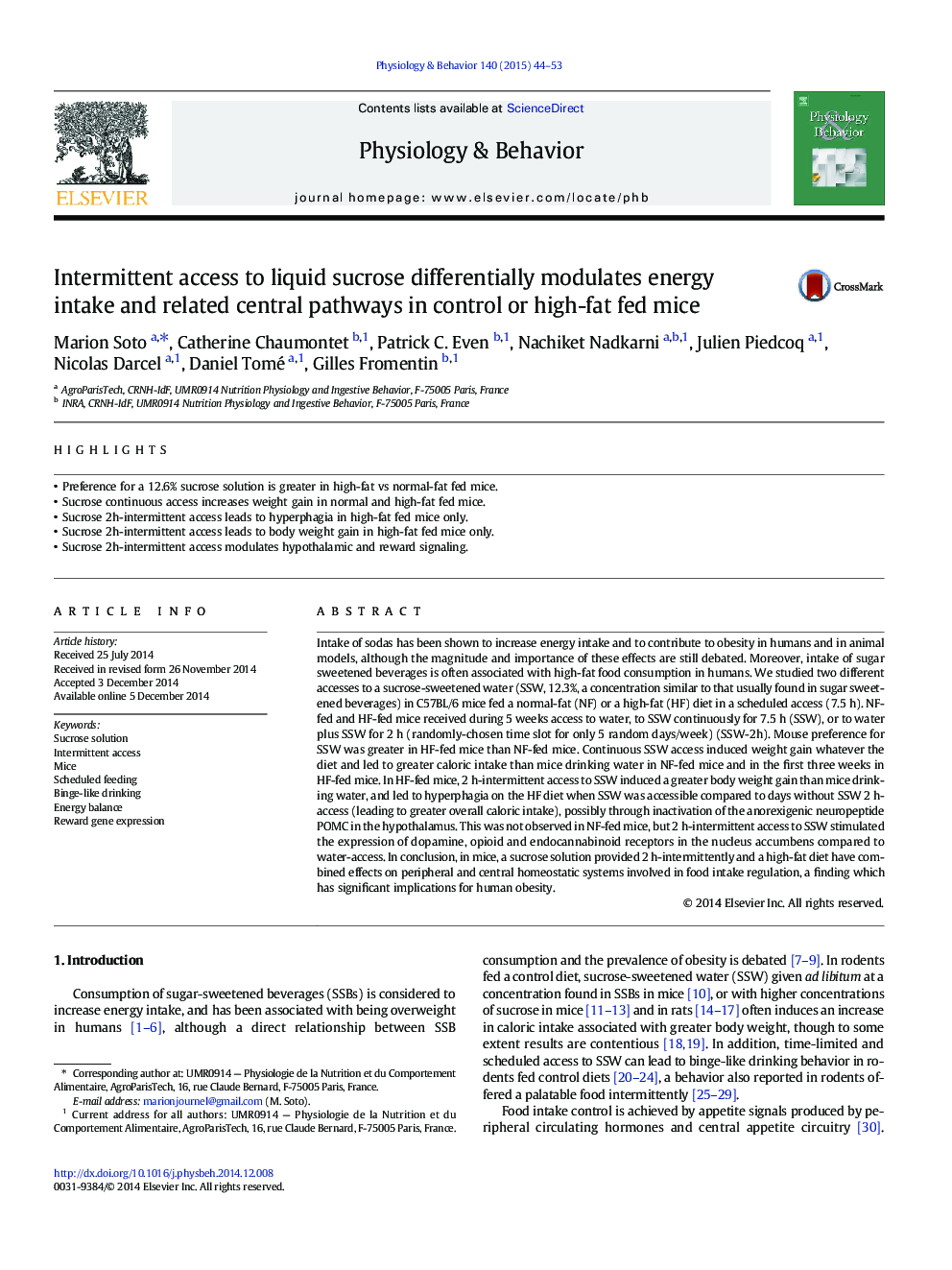| Article ID | Journal | Published Year | Pages | File Type |
|---|---|---|---|---|
| 5923805 | Physiology & Behavior | 2015 | 10 Pages |
â¢Preference for a 12.6% sucrose solution is greater in high-fat vs normal-fat fed mice.â¢Sucrose continuous access increases weight gain in normal and high-fat fed mice.â¢Sucrose 2h-intermittent access leads to hyperphagia in high-fat fed mice only.â¢Sucrose 2h-intermittent access leads to body weight gain in high-fat fed mice only.â¢Sucrose 2h-intermittent access modulates hypothalamic and reward signaling.
Intake of sodas has been shown to increase energy intake and to contribute to obesity in humans and in animal models, although the magnitude and importance of these effects are still debated. Moreover, intake of sugar sweetened beverages is often associated with high-fat food consumption in humans. We studied two different accesses to a sucrose-sweetened water (SSW, 12.3%, a concentration similar to that usually found in sugar sweetened beverages) in C57BL/6 mice fed a normal-fat (NF) or a high-fat (HF) diet in a scheduled access (7.5Â h). NF-fed and HF-fed mice received during 5Â weeks access to water, to SSW continuously for 7.5Â h (SSW), or to water plus SSW for 2Â h (randomly-chosen time slot for only 5 random days/week) (SSW-2h). Mouse preference for SSW was greater in HF-fed mice than NF-fed mice. Continuous SSW access induced weight gain whatever the diet and led to greater caloric intake than mice drinking water in NF-fed mice and in the first three weeks in HF-fed mice. In HF-fed mice, 2Â h-intermittent access to SSW induced a greater body weight gain than mice drinking water, and led to hyperphagia on the HF diet when SSW was accessible compared to days without SSW 2Â h-access (leading to greater overall caloric intake), possibly through inactivation of the anorexigenic neuropeptide POMC in the hypothalamus. This was not observed in NF-fed mice, but 2Â h-intermittent access to SSW stimulated the expression of dopamine, opioid and endocannabinoid receptors in the nucleus accumbens compared to water-access. In conclusion, in mice, a sucrose solution provided 2Â h-intermittently and a high-fat diet have combined effects on peripheral and central homeostatic systems involved in food intake regulation, a finding which has significant implications for human obesity.
